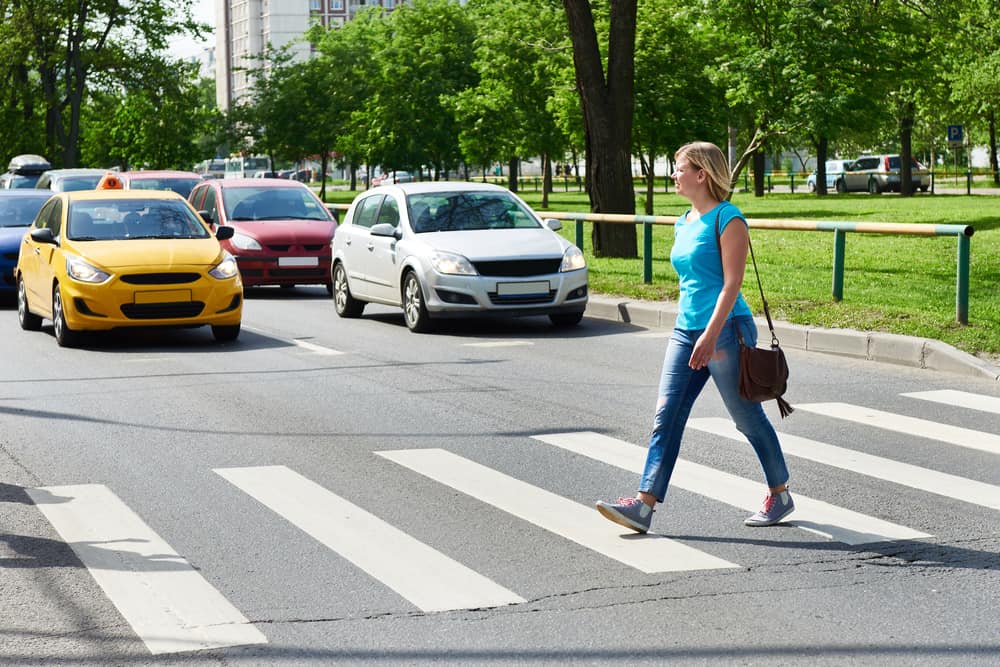According to the 2018 statistics from NHTSA (The National Highway Traffic Safety Administration), the number of pedestrians killed in crashes increased by 3%. This means that the 6,283 deaths recorded were the most since 1990.
Since we all are pedestrians at some point, understanding local pedestrian accident laws and what to do in case of an injury from an accident is essential.
Here are five surprising things about current U.S. Pedestrian Laws worth knowing:
1. Pedestrians don’t always have the right of way
A misconception has led people to believe that pedestrians always have the right-of-way, and if hit by a vehicle, the driver automatically is to blame. Although the exact wording differs between states, some basic rules apply in all the states:
- Traffic signs dictate to both pedestrians and motorists and must be obeyed by both. Motorists must stop or yield according to the sign unless directed otherwise by a police officer. Pedestrians have the right of way wherever signage is available, and any injury to a pedestrian on a marked or unmarked crossway is proof of the driver’s fault.
- Traffic light signals indicate that when a pedestrian faces a green light or walk signal and is preparing to cross, motorists must stop and wait for them to cross.
- Where there are no traffic signals or signs at intersections or crossroads, motorists must give right-of-way to pedestrians near them by stopping or slowing down.
- Pedestrians crossing a roadway at any point where there is no marked crosswalk or within an unmarked crosswalk at an intersection must yield the right of way to vehicles.
- Pedestrians cannot cross at any point between intersections with traffic control signals. They must either cross at the traffic signals or a marked crosswalk.
- State laws also prohibit pedestrians from constituting an immediate hazard by suddenly leaving a curb or other place of safety into the path of a vehicle.
2. Drivers can be liable for injuries even when they have not hit a pedestrian
Sometimes a vehicle might not collide with a pedestrian, but the pedestrian may sustain injuries while trying to avoid being struck by a reckless driver. For example, a pedestrian who injures themselves while trying to prevent a vehicle from running a red light. In this case, the injured pedestrian can file a compensation claim.
3. Pedestrians can claim personal injury from their city
Pedestrians who sustain injuries from an accident can also seek compensation from their city. The city can be considered partially to blame when: there is a broken traffic light, a wrongfully placed crosswalk, a missing stop sign, etc.
The government, city, and state authorities are obliged to keep roads safe for both drivers and pedestrians. If a pedestrian accident is due to their negligence, then compensation can be sought.
4. Alcohol consumption does not automatically place pedestrians at fault
Statistics show that an average of one-third of all fatal pedestrian crashes involves pedestrians with a blood alcohol concentration of .08%dL or more. Data also shows that many pedestrians who are seriously injured have high concentrations of blood alcohol.
Injuries caused to intoxicated pedestrians do not necessarily mean that the pedestrians are at-fault. Unfortunately, pedestrians don’t know this, and many drunk pedestrians never seek damages from the vehicle driver after a collision. In cases like these, the pedestrian may only be partially at fault. If an intoxicated pedestrian is hit by a vehicle that ran a red light, was speeding, was being driven recklessly, or whose driver was also drunk, the driver may be more at blame than the pedestrian.
5. Distracted walking
Much like drunken and distracted driving caused authorities to lay down rules, a growing number of local areas passing ordinances making distracted walking illegal. Distracted walking includes using a mobile phone to call someone, viewing the device, or having both ears obstructed by personal audio equipment.
In Honolulu, a 2017 ordinance makes it illegal to cross the street and look at a cellphone, even just fleetingly, to see the time. Statistics show that the driver of the vehicle does not cause only 23% of collisions with pedestrians. That means that 77% of collisions with pedestrians are caused by reckless driving and inattention. Still, many people feel new pedestrian laws are unnecessary since jaywalking is already against the law.
The law also protects visually impaired or blind pedestrians, but differently in each state. Drivers facing pedestrians with a white cane, depending on the state, are required to come to a complete stop, show extra caution, or have no laws providing for any of these.
These are the five surprising facts everyone should be aware of regarding the general pedestrian laws in the U.S. are concerned. These will help to clear any common misconceptions.


